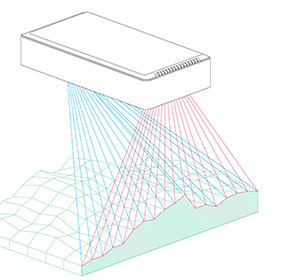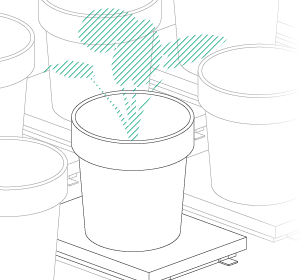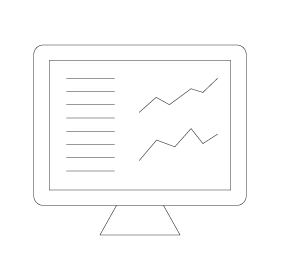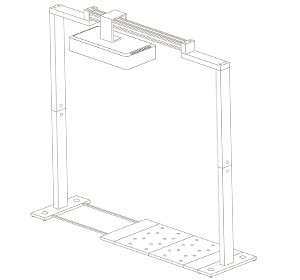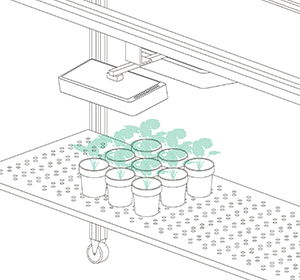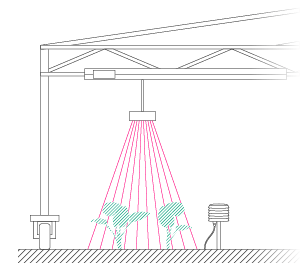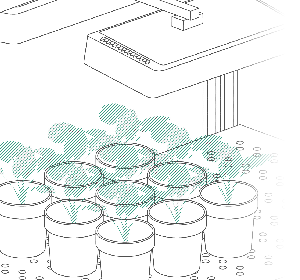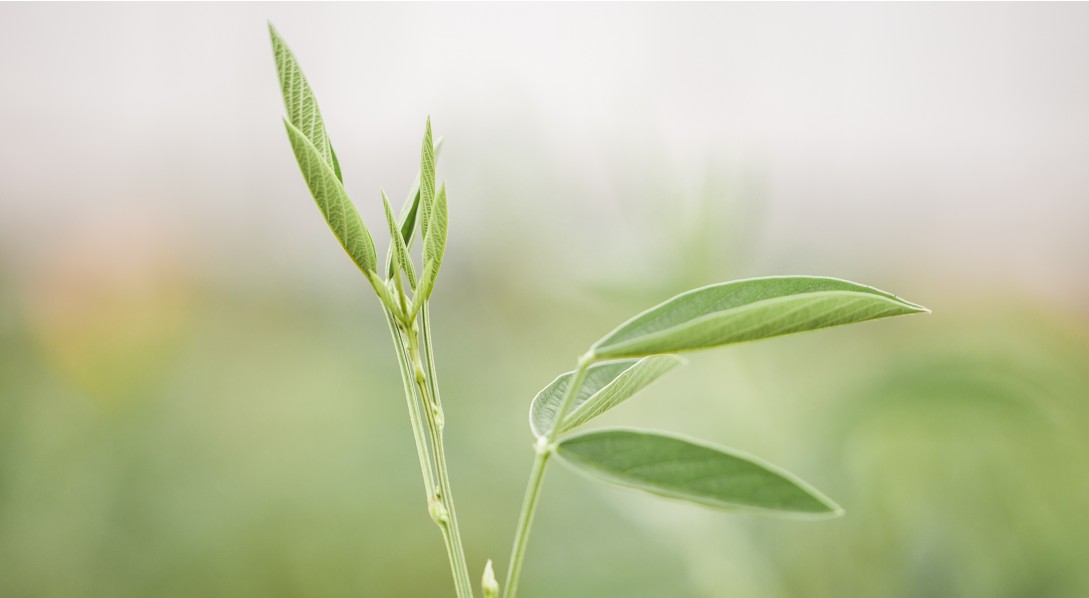Do we really need automated plant phenotyping?
If you have been to a conferences dealing with plant phenotyping, you have most probably heard the opening statement: “In the year 2050 there will be 9 billion people on the planet and the only way to feed the world of tomorrow is by increasing yield per arable land. Plant Phenotyping is key!” Working for a company providing hard- and software and know-how for automated plant phenotyping, these statements make me quite happy. Likewise, however, I have heard it so often that I am getting a bit suspicious and am wondering whether these predictions really hold true. Will plant phenotyping really save the world of tomorrow?
Plant Phenotyping is in vogue!
The concept of plant phenotyping is really nothing new. Every plant biologist, breeder or even grower “phenotypes” his plants, which is nothing else than assessing quantitative and qualitative traits of plants either to answer a biological question, breed for new cultivars or just control or improve processes in plant production. The difference in the use of the term “phenotyping” today is the task to capture the phenotypic variability of huge genetic collections and associate it with the underlying genetic background. Interestingly, the last decades have been dedicated to improving the pace and reducing the costs of sequencing, I guess because most of us were convinced decoding the genome would be enough to understand its functioning. This resulted in tons of genetic information, however the functioning of genes still remains very, very unclear. Nowadays there is a demand to phenotype all this material and see what combination of genes is responsible for a specific phenotype. This has led to a kind of tech battle over the last few years for more plant parameters, more sensors, higher resolution and higher throughput, or in short: for more data in which we expect to find answers. Now we have to closely monitor that this newly emerged discipline is not just technology driven; we also have to put the questions back into the frontline, otherwise it will eventually be difficult to justify all the investments, and saving the world will be hard. The amount of publications dealing with plant phenotyping is increasing from year to year and an entire industry has emerged providing technologies and services for automated plant phenotyping. I counted at least six plant phenotyping companies (including us) exhibiting their products and services at the PAG in San Diego this year. So, there is no doubt – plant phenotyping is in vogue!
What have we learned from plant phenotyping so far?
After some years of using automated plant phenotyping machines there is one conclusion we can draw: Having an automation with some sensors is not a guarantee to finding an interesting phenotype and its underlying genetic mechanism. This holds especially true for the commercially interesting parameters like yield, biomass, growth or abiotic tolerances like drought resistance etc. Often, the strategy was to identify monogenetic traits, genes with large and dominating effects. Unfortunately those traits are rarely restricted to just one gene, but are rather composed of a whole set of genes. Although, the search for a “master gene” can of course be a strategy in itself and is actually quite common in the crop protection industry, where hundreds of thousands of chemical agents are sprayed on plants and observed as to whether there is a beneficial effect or not following the maxim ‘spray and pray’. But this gamble for “key-genes” requires substantial amounts of investment before getting a return and, so far, there have not been many success stories.
About the G x E
Another learning experience is the often forgotten, but very well-known, strong dependency of a phenotype on the environment. Phenotypes can strongly differ when grown under different environmental conditions. Traits found in a certain environmental context cannot be easily reproduced in another environment. This complexity was the subject of a study conducted a couple of years ago. Ten different labs spread over Europe tried to reproduce the phenotype of the same genetic material (three ecotypes of Arabidopsis) by using the same growing protocol. The key finding of this study was: it was not possible! The slightly different experimental conditions from site to site led to different genetic rankings. Actually, this phenotypic plasticity, the ability of a plant to change or adapt in function of a changing environment, is a trait in itself. This strong interaction of the G x E might also be responsible for the difficulty to reproduce an interesting phenotype found under controlled environments in the field. Vice versa, there might be interesting phenotypes which escape the screening/phenotyping routines in controlled environments, but would show up under field conditions, meaning that we are always blind in one eye. Another aspect which adds further complexity, but which is rarely taken into account, is the dynamic change of environmental parameters. Typically, screenings are performed under rather stable conditions, although it is quite well documented that plants sense changing conditions and heterogeneity and develop different gene activities and phenotypes. For those reasons it is necessary to carefully track all environmental conditions the plants were exposed to during the phenotyping process for later analysis, interpretation and for the comparison with other data sets.
Yield is not a trait!
When people approach us we typically ask what traits they are interested in. The most frequent answer is: yield! Of course yield is a crucial parameter to assure the future demands of a growing world population. However, yield is not a trait! It is an integrated parameter, which involves many different traits at totally different organisation levels of a plant, like on the subcellular-, cellular-, tissue-, organ-, whole plant- and stand-level. In order to increase the efficiency of plant phenotyping, there is a need to move away from the very integrated phenotypes that have been the bulk of plant phenotyping so far towards the causal building blocks of these integrated phenotypes. Therefore, if plant phenotyping is to be relevant for crop improvement, it is critical to understand the basic biological and physiological processes behind phenotypes, especially complex ones.
It´s not as easy as we expected
A significant result from the genomic revolution is that the functioning of genes is much more complicated than we have ever expected, and the same holds true for plant phenotyping. It is not only about the technical challenge of assessing different plant parameters non-invasively and reliably at high-throughput, but the high dimensionality of factors that affect the phenotype, making it very hard for prediction. I just mentioned the influence of the environment, but we have learned that there is more to consider, namely the intrinsic phenotypic plasticity itself. For instance, a genotype which is expanding its leaf area rapidly at an early stage does not necessarily have the biggest leaf area at a later stage, hence just measuring one parameter at a given time of a very large number of genotypes is not enough, and the temporal variation of a phenotype has to be taken into account. Also, traits found on a single plant might not be transferrable when the genotype is grown under field conditions and in close stands, where again interaction takes place and different traits are required.
Automated Plant Phenotyping is just a tool!
So, is high throughput plant phenotyping going to save the world of tomorrow? It will definitely play a role. The extraordinary complexity of the genes and their interaction with the environment requires much more knowledge than we ever expected. Considering the on-going global change, the strong impact of agriculture on the planet and the exploding global population, there is a strong urge to adapt our crops faster and more efficiently to the upcoming scenarios and demands. Therefore it is crucial to increase the pace of research gain, required for faster and more efficient plant breeding. Hence more experiments and trials have to be performed which requires automation and higher throughput. However, we clearly need to keep in mind that even the best automation and the biggest data set will not provide us any answer if we do not have an appropriate question. The extraordinary complexity of the functioning of genes can only be tackled with well-thought-out concepts and questions, cleverly designed experiments, and knowledge of how to implement the findings into models for prediction. In this context, automated phenotyping is a powerful tool that is otherwise a waste of time and money.

